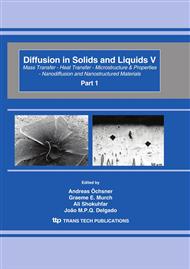p.764
p.771
p.779
p.785
p.790
p.796
p.802
p.808
p.814
Performance Characteristics of Capacity Control of Industrial Water Cooler Using Pulse Modulation Valves
Abstract:
Recently, the technical trend for machine tools is focused on enhancing of speed and accuracy. For high speed and high accuracy, the thermal deformation must minimize in machine tools. To minimize the thermal influence, accurate machine tools need to be adopted to a cooling system with high precision. In this study, we suggest a high accuracy water cooling system using PMV(Pulse Modulation Valve) control. In this system, we use a compressor which is able to be driven under the condition of unloading to improve the efficiency of the PMV control. And a vapor refrigerant from the suction side of the compressor is injected back into the compressor suction side using a solenoid valve. The PMV control can be used by this method. Also, by comparing with the existing ON-OFF control method on identical operating conditions, we evaluated the efficiency and reliability of the new method. This method showed a shorter reaction time than that of the existing method. Also, the efficiency and performance improved by lower compressor work using the vapor injection without compressor stop. This study shows that the COP of this system decreased when load capacity of compressor was decreasing. In addition, the precision of this system using PMV was higher than for the ON/OFF type. This result will be used for a basis data of comparative experiment with inverter control and to manufacture of high accuracy water cooling system.
Info:
Periodical:
Pages:
790-795
Citation:
Online since:
April 2010
Authors:
Price:
Сopyright:
© 2010 Trans Tech Publications Ltd. All Rights Reserved
Share:
Citation:


